Introduction
For the Reflections Unit, we asked ourselves the question “Who am I?” and drew inspiration from it. The goal of the unit was to talk about who you are as a person, as well as discover something new about yourself. In English, we wrote Personal Statements, essays that demonstrated our values as a person. In Digital Media, we created Mandalas, each one unique to each person. Finally, in Film, we made a Reflections video, in order to show who we are.
Essence Objects List
In English, we were asked to make a list of objects that represented who we are as a person, and used it as inspiration for the rest of the projects in various classes of the Reflections Unit.
- Glass Animals How to be a Human Being vinyl record
- Beat up and bitten can of bear spray
- Old apple earbuds (only one works because I always blow out the speakers)
- Percy Jackson and the Olympians: The Lightning Theif – first three pages are falling out
- Old clunky record player I found on craigslist
- Whiplash DVD
- Confetti from two different twenty one pilots concerts taped to my wall
- Notebook of all the ticket stubs and maps I’ve collected when travelling for the past five years
- Snake plant – it’s the only one that I have been able to keep alive
- Photo of my friends and I tired and sweaty after a concert – but all smiling 🙂
- Pair of sneakers that have holes in the soles – I get pretty attached to my shoes
- Forest green Fjallraven Kanken backpack
- Extremely dented hydroflask with “YAY! SUNSHINE!” sticker on the side
- Old blue and green flannel
- Binderclips
- Pink and Blue friendship bracelet
- Weather Vane
- Blue and orange color palette
- Led Zeppelin shirt with paint stains and holes
- Ocean in a jar
- Firewatch
Personal Museum Curation
When Freestyle visited the MOMA this year, Seniors were assigned to gather photos of art pieces that represented who they are and who they are not. For my pieces, I looked for a wide variety in the museum.
Who Am I?

This piece, Truisms, by Jenny Holzer represents who I am as a person because the “truisms” that Holzer writes for this piece reflect my own values and ideas towards the world. Some of the truisms that are stated talk about showing confidence, as well as talk about political ideas, such as how the government shouldn’t have control over the people, as well as many more ideas. Overall, this piece represents my core values of communication and connection with others through the pieces ability to “talk” to the viewer as well as for the viewer to engage and connect to the piece.
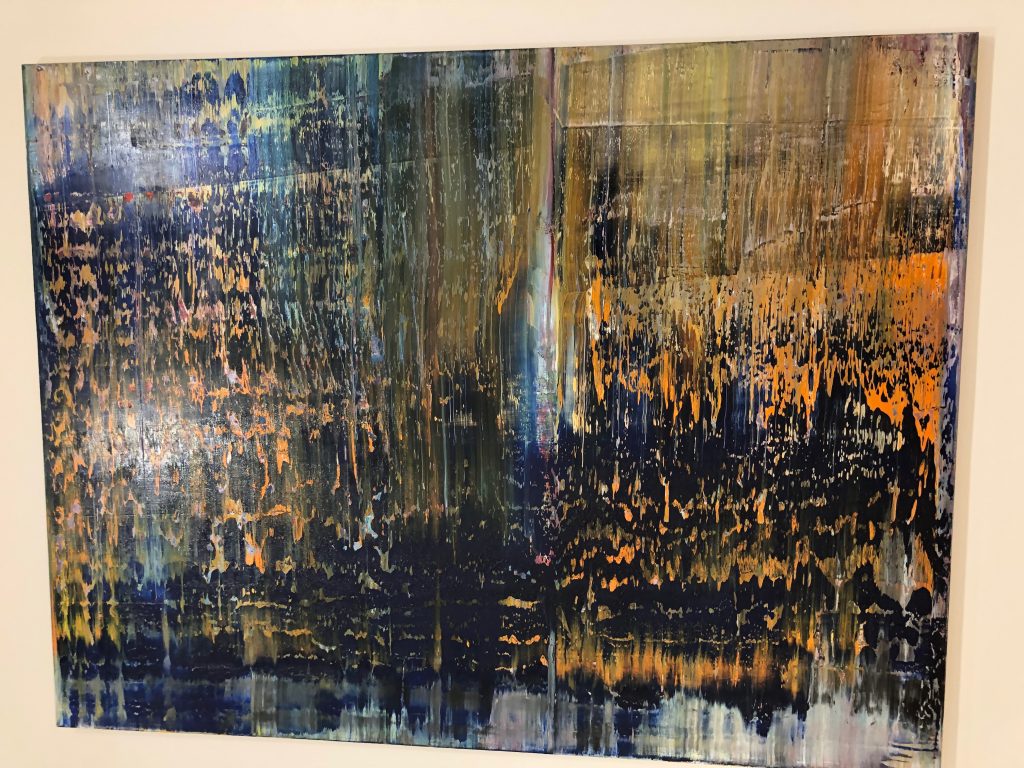
This piece, Wald (4) by Gerhard Richter, represents who I am through the use of the colors and through what the image depicts. The image is supposed to depict nature through an abstract form, and this connects to who I am because like the painter, I also have an appreciation for the world, while also having a curious viewpoint towards it. This piece represents my core value of curiosity as well as self-expression.
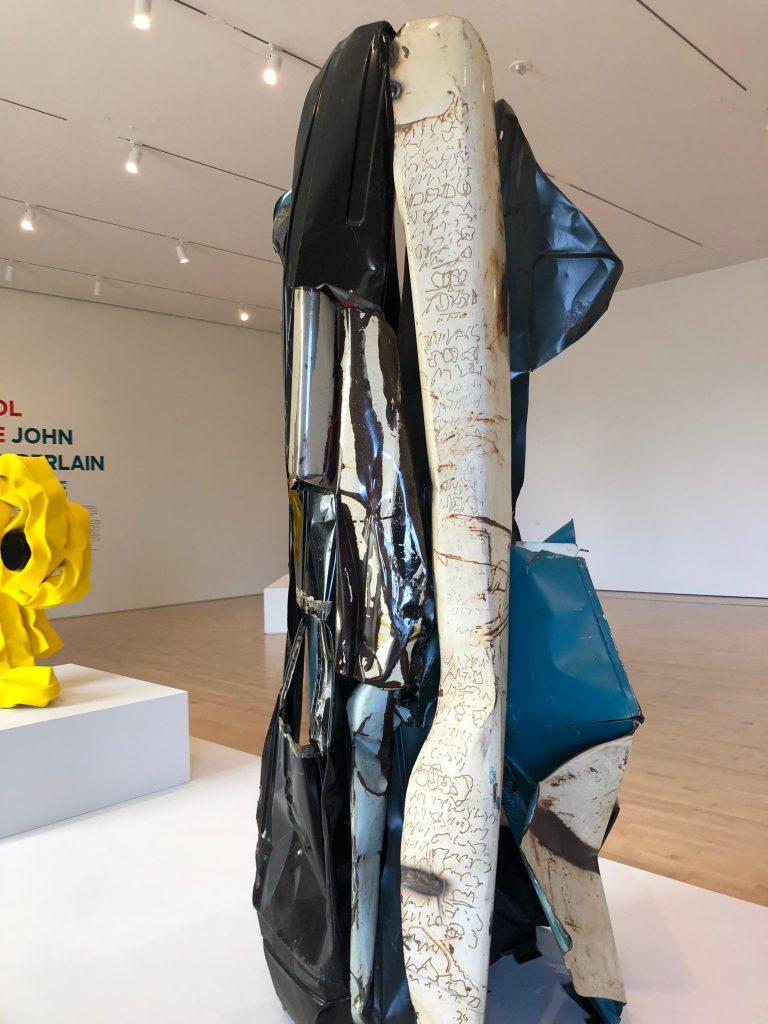
This piece, Fenollosa’s Column, by John Chamberlain, represents who I am through the story behind the piece, as well as the sculpture itself. The sculpture is made out of many different parts from many different places, just as who I am as a person has been sculpted by the places I have been and the people I have met. The story behind the piece itself connects to me because like the piece, I greatly value different forms of how people can communicate with each other. This piece shows my core values of creativity and communication.
Who Am I Not?
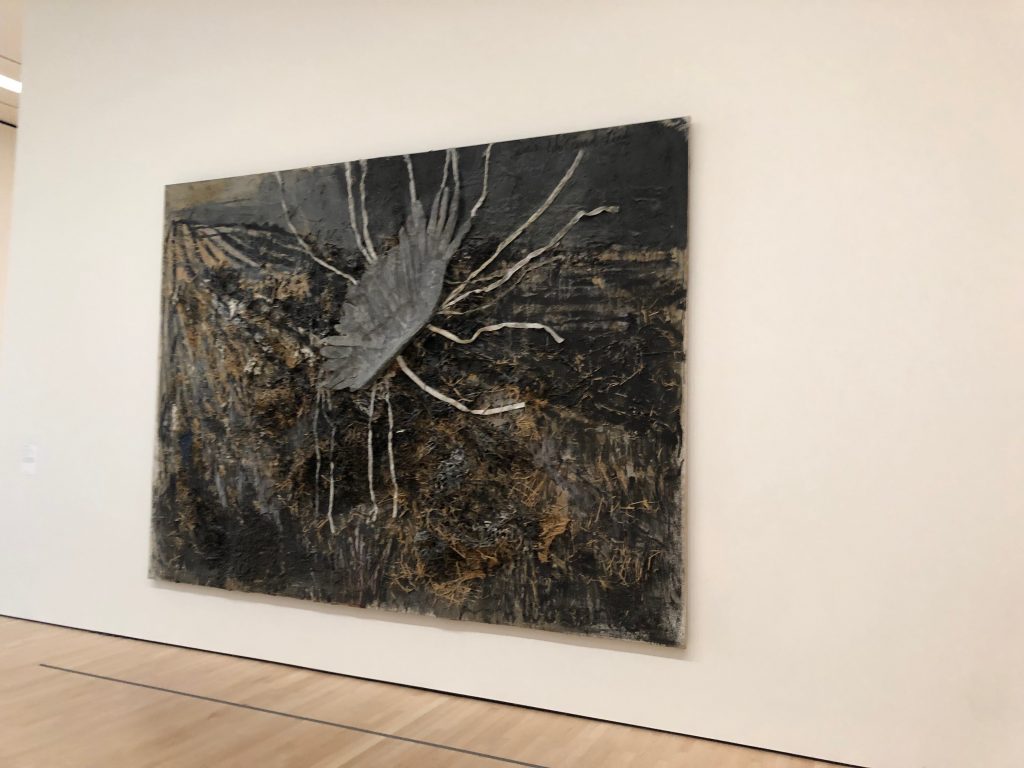
This piece, Wayland’s Song, by Anselm Kiefer does not represent who I am through the image. It is an interpretation of the story of Icarus, which does not represent who I am as a person because while I identify with Icarus’ desire for freedom, his hubris is something that I detest. Also, the imagery of the piece brings discomfort and sadness, and while that is a part of everyone’s life, it is not something that I want to focus on.
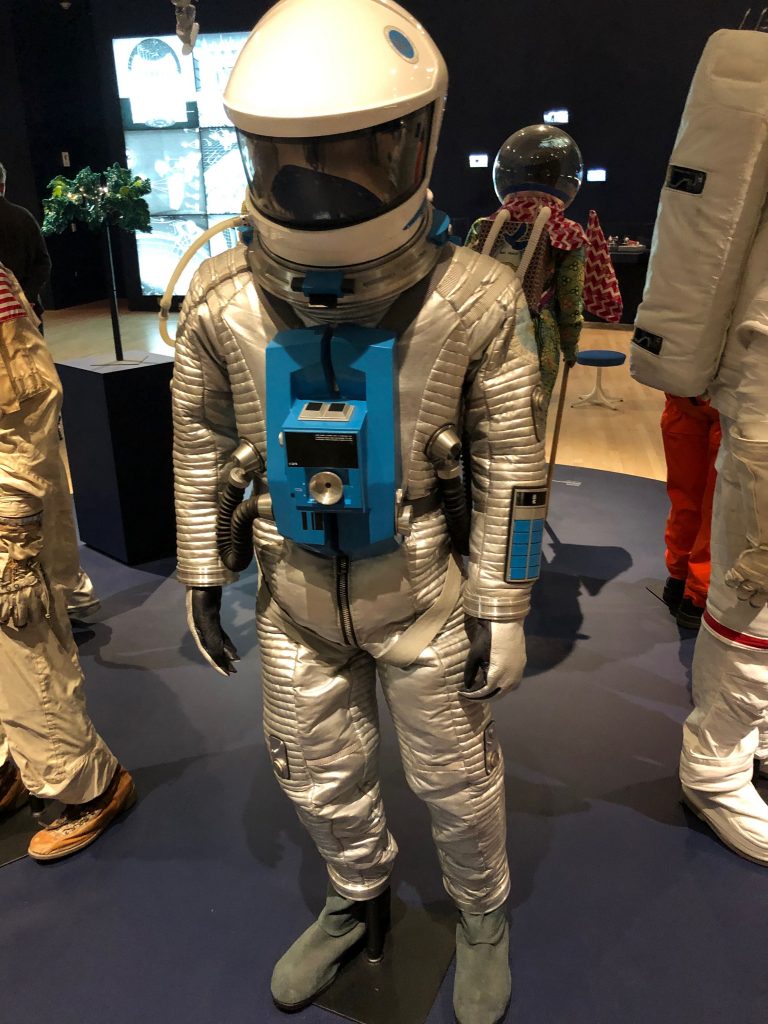
This piece, one of the space suit costumes from 2001: A Space Odyssey does not represent who I am as a person. While I am a fan of the film and Stanley Kubrick’s work, the piece doesn’t represent me for its practicality. While I know that it is necessary for people to breathe in space, if I am going to present an art piece, I want to show the creativity and how the piece thinks outside the box, not how it stays within it.
Conclusion
My own artwork and the criticisms of my own artwork greatly influenced what I put in my personal museum. When I create artwork, I have to make sure that I am inspired by what I am creating, not just making something because I have to. The pieces I am most proud of are the ones that get myself and other people excited, they are the ones that are the most strange ideas and the ones that are the most challenging. The pieces that made the cut excited me and looked like the artist poured themselves into making them and also looked like they could be living, while the pieces that didn’t make the cut felt very static and motionless.
Mandala
We were assigned to create Mandalas using the technology of Illustrator. Each mandala is unique to the person who made it and it shows their personality as well. After creating the black and white mandalas, they were laser printed onto a medium of our choice.
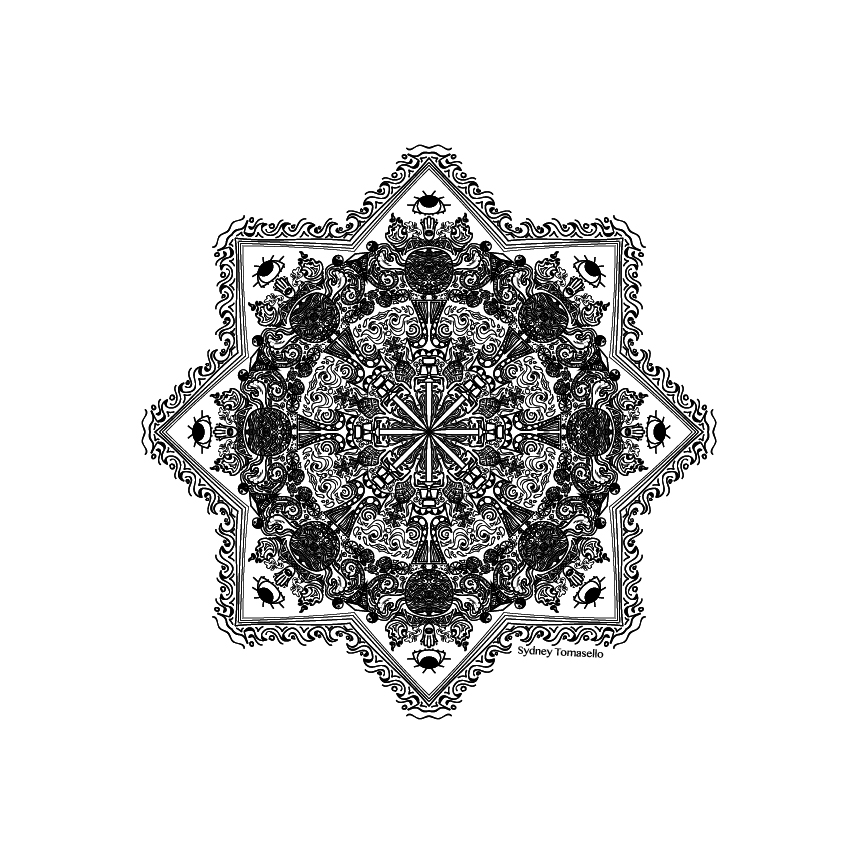
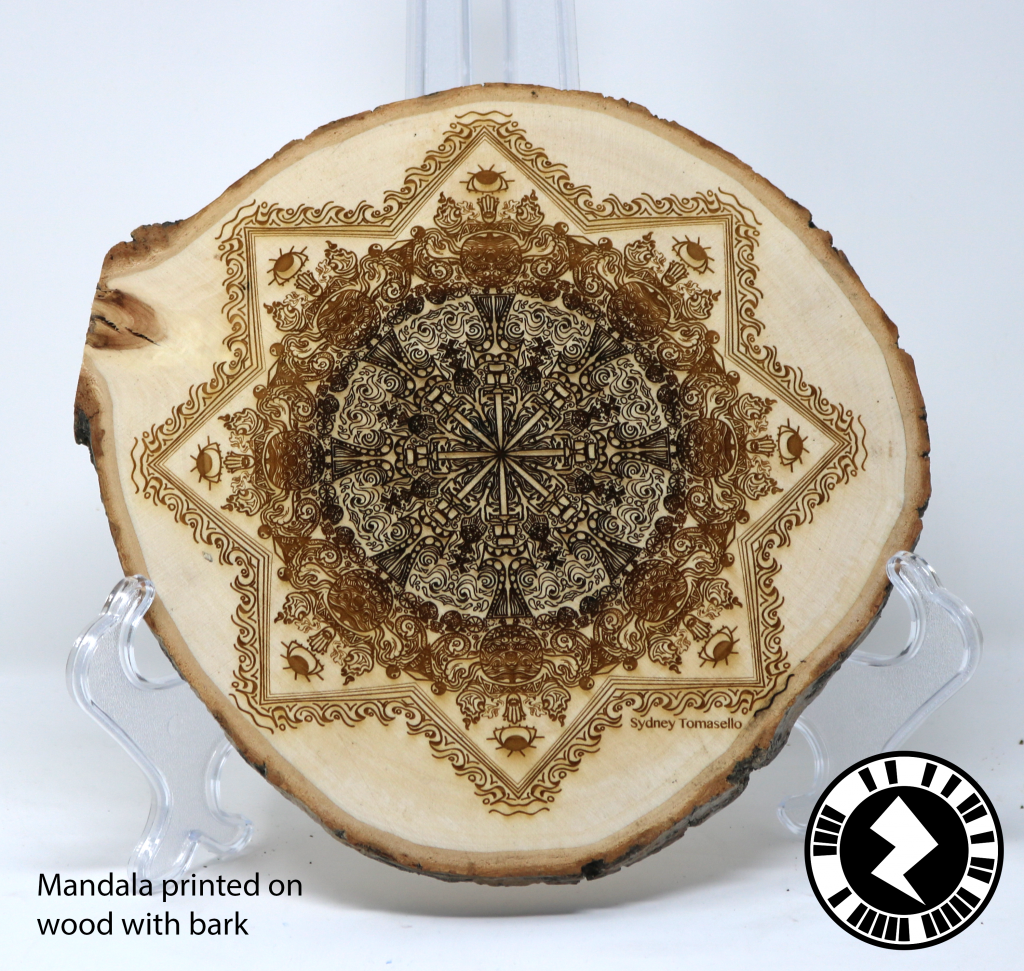
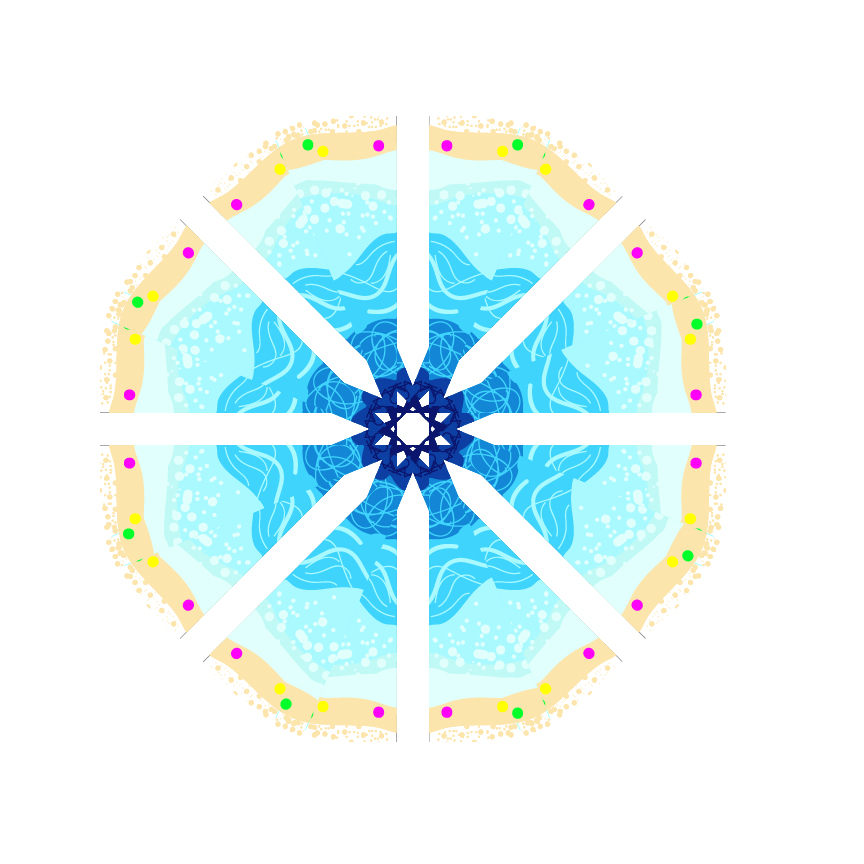
Mandala Reveal Build Video
Mandala Reflection
Perspective Piece
In Digital Media class, we were assigned to create a personal perspective piece, where we woud write a rant, and then make it into a video using After Effects. This project was very challenging for me. After struggling to think of what to write and discuss, I landed upon the topic of my hyper fixations. Then, I struggled to figure out how to visualize my problem. While it isn’t my best work, I am proud of my product because I was able to overcome a lot of my mental blocks and finish the piece. Through this project, I grew as a digital artist because I learned that sometimes you don’t always have inspiration. In those times, it is best to just get the work done.
Memoir Essay
In English IV Honors, along with writing our Personal Essay, we were required to read a Memoir book and write an essay about how the book connects to the reader. For my Memoir Essay, I chose to read the book Born A Crime: Stories from a South African Childhood by Trevor Noah. The memoir follows Noah growing up in South Africa before, during, and after the breaking of the apartheid.
“And, finally, for bringing me into this world and making me the man I am today, I owe the greatest debt, a debt I can never repay, to my mother” (288). In the back of Trevor Noah’s book, Born a Crime: Stories from a South African Childhood, this sentence is the final one, marking the end of the acknowledgements, as well as the end of the story. In “Born a Crime” the author Trevor Noah describes his childhood in South Africa through the breaking of the apartheid. Trevor Noah creates vulnerability by using humor as a way to connect with his audience, through explaining stories of his culture and upbringing.
Trevor Noah’s upbringing brought him his strongest and most apparent core value throughout the story: family. He cares about his dad, and how he cares about his siblings and cousins, but most importantly, his mom. Noah’s mother holds the titular role in his memoir – she taught him everything that was important to him. In his book, when Noah’s mother was asked why she brought him to neighborhoods outside of the ghetto, he quotes her saying,“‘Because,’ she would say, ‘even if he never leaves the ghetto, he will know that the ghetto is not the world. If that is all I accomplish, I’ve done enough” (74). It is easy to see here that Noah’s mother loves him and wants him to succeed. However, how does that translate into family being one of his core values? Well, because his mother gave him this support, and showed him that there was more outside of what he knew as his world, she set him up for success. She, like many other parents, wanted her son to go beyond where she had gone, and do more than she could ever do. While Trevor Noah may not have recognized that when he was younger, he does now, repeatedly crediting his mom for creating the person he is today. In this book, Noah often peels away from the comedy aspects, and brings you into his past, a very serious place. At one part during the book, Noah and his mother had to run away from being kidnapped, “So I ran, and she ran, and nobody ran like me and my mom. It’s weird to explain, but I just knew what to do. It was an animal instinct, learned in a world where violence was always lurking and waiting to erupt… Had I lived a different life, getting thrown out of a speeding minibus might have fazed me… But there was none of that. Mom said “run,” and I ran.” (16). While this is a very serious part of the book, it very clearly shows how Noah uses his humor to bring you into his stories, but also to be vulnerable. The apartheid was a very serious time that effected many people, and by using humor and these personal stories, Noah is able to create an empathetic connection with the reader. Trevor Noah knows that family is most important, and that without them he would be nowhere. The mutual respect Noah and his mother have for each other is a constant thread. The core value of family is developed throughout the book through the repetition of it being the topic of many stories, as well as through the shifts in tone. His ability to both joke and be serious about the topic of his family clearly shows that it is one of his core values.
There is a lot of internal conflict within Trevor Noah as he is growing up during the breaking of the apartheid. However, through this conflict, Noah’s core value of culture arises. Culture, by definition, is “the customs, arts, social institutions, and achievements of a particular nation, people, or other social group.” During the apartheid, white and black culture was very different. White people, for the most part, lived in rich neighborhoods, help higher ranking jobs, and overall had better lives. Meanwhile, black people often lived in ghettos, left to perpetually fight with their opposing tribes. However, this left colored people (half black and half white) in limbo. Noah, being a colored man, grew up with this conflict of never being able to fit into a group, often not even with his own family. He was constantly forced to be an outsider, because he couldn’t fit into a box, he would have to choose between being black or being white. He describes his challenges with this at school, and how he came to the conclusion of which culture he identified with more. “Being at H.A. Jack made me realize I was black. Before that recess I’d never had to choose, but when I was forced to choose, I chose black. The world saw me as colored, but I didn’t spend my life looking at myself. I spent my life looking at other people. I saw myself as the people around me, and the people around me were black… I didn’t belong with the white kids. I wasn’t a part of their tribe. But the black kids embraced me.” (59). Culture can mean a lot of different things to people, but for the most part, your culture is a part of who you are, it is something that impacts your everyday life. For Noah, because his family was black, identified with that culture. Specific phrases that he uses, such as “tribe”, and “embraced” shows what Noah values about his culture. He values the ability to connect with people, to be fully accepted for who he is, something that he could never get from white kids. However, Noah’s world was not as simple as choosing to be black. As he grew up, he found that no matter how hard he tried, he was still an outsider. He describes his life as being, “Ever the outsider, I created my own strange little world” (139). He continues by explaining, “Since I belonged to no group I learned to move seamlessly between groups. I was a chameleon, still, a cultural chameleon” (140). Noah brings complexity and vulnerability through his situation in this section. He is showing the reader that as a colored person, he didn’t fully have his own culture, even if he identified with one. He would always be seen as an “other”. By calling himself a chameleon, he brings vulnerability, because he is telling the reader that he is constantly changing who he is, as well as being invisible. This idea of Noah struggling to find his culture is consistent throughout the book, and results in a lot of inner turmoil for him. The core value of culture is shown through Noah’s desire to belong to one, as well as his ability to identify and connect to many people through different cultures.
Noah uses humor about serious topics and ideas as a way to maintain vulnerability and connection with the reader. Noah views his life through a respectful, but also comedic lens, understanding when to take things seriously and when to show that humor is a way to bring you out of sadness. Humor is a mechanism that Noah uses for himself and others to bring further understanding to his story. Humor is the main technique that Noah uses to connect to his reader. He sees the value in humor, how it is not the opposite of sadness, but a way to express yourself and how you are feeling. Both in his book and in his stand-up comedy, the climaxing joke follows the story of his mother getting shot in the face. “‘My child, you must look on the bright side.’ ‘What? What are you talking about, ‘the bright side’? Mom, you were shot in the face. There is no bright side.’ ‘Of course there is. Now you’re officially the best-looking person in the family.’ She broke out in a huge smile and started laughing” (281). For many people, humor is the best way to connect to someone. Jokes are funny when they are relatable, and Trevor Noah is a master of this skill. While he knows that his audience hasn’t gone through the breaking of the apartheid, he does know that many people share the same core values as him. By embracing vulnerability about topics of family and culture, he appeals to a wide audience. By expressing himself through comedy, Noah was able to create a best-selling story, one that is successful because of his ability to relate to readers through core values. This is best supported by a quote by Edwidge Danticat, “I have never written a memoir by choice. Each time I write memoir, in short or long form, something happens that compels me to do it – something that feels pressing and urgent, something that there is no other way to express.” In many ways, this is one of the principles of what comedy is about. You aren’t a comedian for personal gain per se, but because that is how you express yourself and tell your story. In the case of Trevor Noah, the story of his early life is so essential to him that he must tell it. His story is one that he knows can be funny, but most importantly, one that he knows people will be able to connect with. Noah uses humor in his book “Born a Crime” to connect to his reader on a deep level.
Trevor Noah’s ability to bring the reader into his world, to laugh and cry with him, is a blueprint for finding humor in even the most tragic circumstances. His lighthearted humor tackles extremely serious subjects; watching Noah grow throughout the book creates an empathetic reading experience. On the surface, Born a Crime is an inspiring story about a boy and how he lived through the apartheid. However, with a closer look, Noah uses humor as a method of vulnerability and a device to connect to his readers. Noah relates to his readers through his common core values of family and culture, while also creating an empathetic link through humor. Throughout “Born a Crime” the reader learns about Noah, and how he uses comedy to help him understand what he went through in his youth. Through funny anecdotes, and serious commentary, Trevor Noah creates a successful memoir that allows him to connect to his audience.
What I valued most from this assignment was being able to learn about what connects us together the best. In Born a Crime, Noah connects to the reader through his stories, and it shows how we can all learn from each other.
Reflections Video Essay
For my first project as a Film student, I completed the assignment to create a video essay that told the audience about who I am, as well as revealed my values.